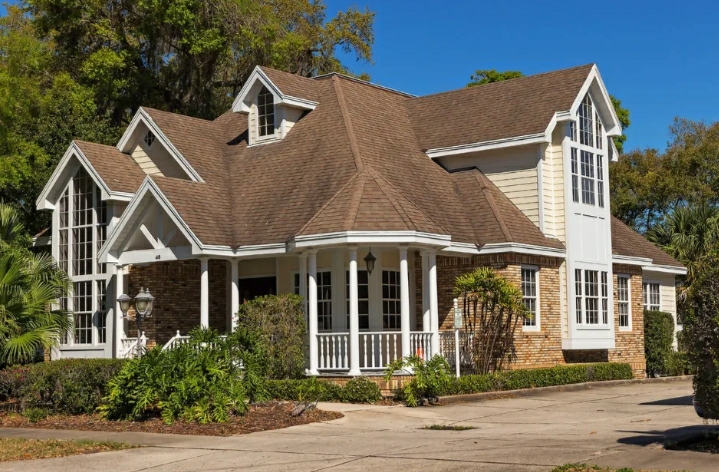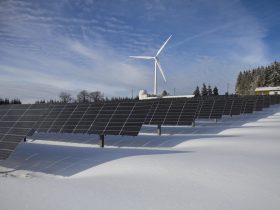
Many homeowners fail to maintain their roofs. A roof is often considered one of the most “out of sight, out of mind” elements of a home’s structure simply because a lot of people give more thought to maintain elements that they directly interact with every day, such as doors, windows, floors, stairs and porches. These homeowners often deal with emergency roof repair and roof replacement scenarios that cost them a lot in terms of time and money.
Some people have to pay extra for environmental cleanup and other remediation services from roof-related interior property damage. A bad roof can even potentially harm the health of people and pets living or visiting the structure. Call a professional roofer like The Roof Depot immediately if you notice any of the following warning signs that you can’t afford to ignore:
Leaks or Stains in Rooms
Believe it or not, some people simply put buckets under leaks and paint over water stains that appear on ceilings and walls instead of investing in roof repairs. Any time you see water dripping from a ceiling or stains, your roof likely has one or more cracks or holes in it. Roof damage does more than cause irritation when it rains. It can affect overall structural integrity. The water can degrade load-bearing wooden structures that are necessary to prevent a roof collapse.
Moisture in attic and wall insulation can reduce how well it performs to keep your home warm or cool and adversely impact your utility bills. A moist environment promotes the growth of harmful mold. If you live in a cold climate, any water inside of roof materials can freeze in winter, expand and cause a larger and more expensive-to-repair area of damage. Also, gaps give insects and other pests access to your home.
Missing or Damaged Shingles
Unless your roof has a channeled, coated metal top layer to direct the flow of rainwater and snow off of it, another warning sign is the physical state of its overlapping shingles. All of the shingles must be in an optimal physical state to prevent moisture from seeping into underlying areas. Shingles often become dislodged or damaged by wind, sunlight, flying debris and even people walking on the roof.
If your roof is missing shingles, then it’s time to call a roofer. If your roof has asphalt shingles, you also need to contact a professional if you find cracks, brittleness, bubbling, curling or exposed nail or screw heads. Also, check for smooth surface patches and lines or piles of sand granules inside of the gutter or on any cement or asphalt surface directly below the edges of the roof.
Soffit and Fascia Deterioration
Water and age are the two top causes of deterioration to the soffit and fascia that make up the underside and edge of your roof. The most common signs of deterioration are cracks, holes and missing pieces. You might also hear animals in the roof or find them in the attic or walls since insects, spiders, birds, bats, squirrels, mice, raccoons, snakes and other pests often access these areas through holes and other types of gaps in the soffit and fascia.
Pests then build nests under the roof or chew their way into other areas of your home. With soffit and fascia damage, you might also notice an increase of black or house flies, ladybugs and spiders in other rooms of your home, especially near windows.
Warped Roof Surface
Any type of warping of the roof’s shingles or overall appearance, such as curling, buckling or sagging, indicates that either the surface directly under the shingles has absorbed water or the roof deck, rafters or ceiling joists have degraded because of water- or age-related damage. A warped roof isn’t merely an eyesore.
It’s not a conversation piece because it makes your home look interesting or unique. If the deck is too badly damaged and deteriorated, you might fall through the roof when walking on it. Rafters support the weight of your roof. Joists support the rafters and ceilings. If any of these areas experience too much damage, then your home’s roof can collapse.
Old or Damaged Chimney
An old chimney that was installed at the same time as your roof can reveal deterioration that occurs with the passage of time better than the roof’s surface. If the roof’s underlayment and deck haven’t been inspected in a long time and you see missing or crumbling chimney bricks and mortar, then your chimney serves as a good visual indicator of potential age-related deterioration happening under the shingles even though it’s more directly exposed to the elements.
Wood breaks down and experiences moisture- and pest-related damage far more easily over time than brick and mortar. If your old chimney is falling to pieces, then it’s likely that the hidden areas of your roof aren’t in much better shape. Additionally, any problems with the flashing at the base of the chimney, such as missing flashing, popped hardware and corrosion, can cause leaks.
For Consideration
Of course, any home design features embedded in the roof that disrupt the surface, such as skylights and vents, can also provide you with clear warning signs. They have flashing that can become problematic. As your home settles over time, the seals around the edges of these features can break and cause leaks and warp the roof.
The simplest way to know if you might need to invest in repairs or total roof replacement is to check your records. If you’ve lived in your home for more than a year and there hasn’t been any type of maintenance, then it’s time for that inspection. The chance of necessary repairs increases every year that you don’t hire a professional to inspect and maintain your roof.
Keep in mind that if your roofer insists that you need an extensive roof repair or total roof replacement, the short-term, upfront investment actually saves you time and money in the long run. Once you have a new roof installed, you won’t have to worry about expensive emergency repairs unless an external human-made or major natural event causes sudden damage.







Leave a Reply